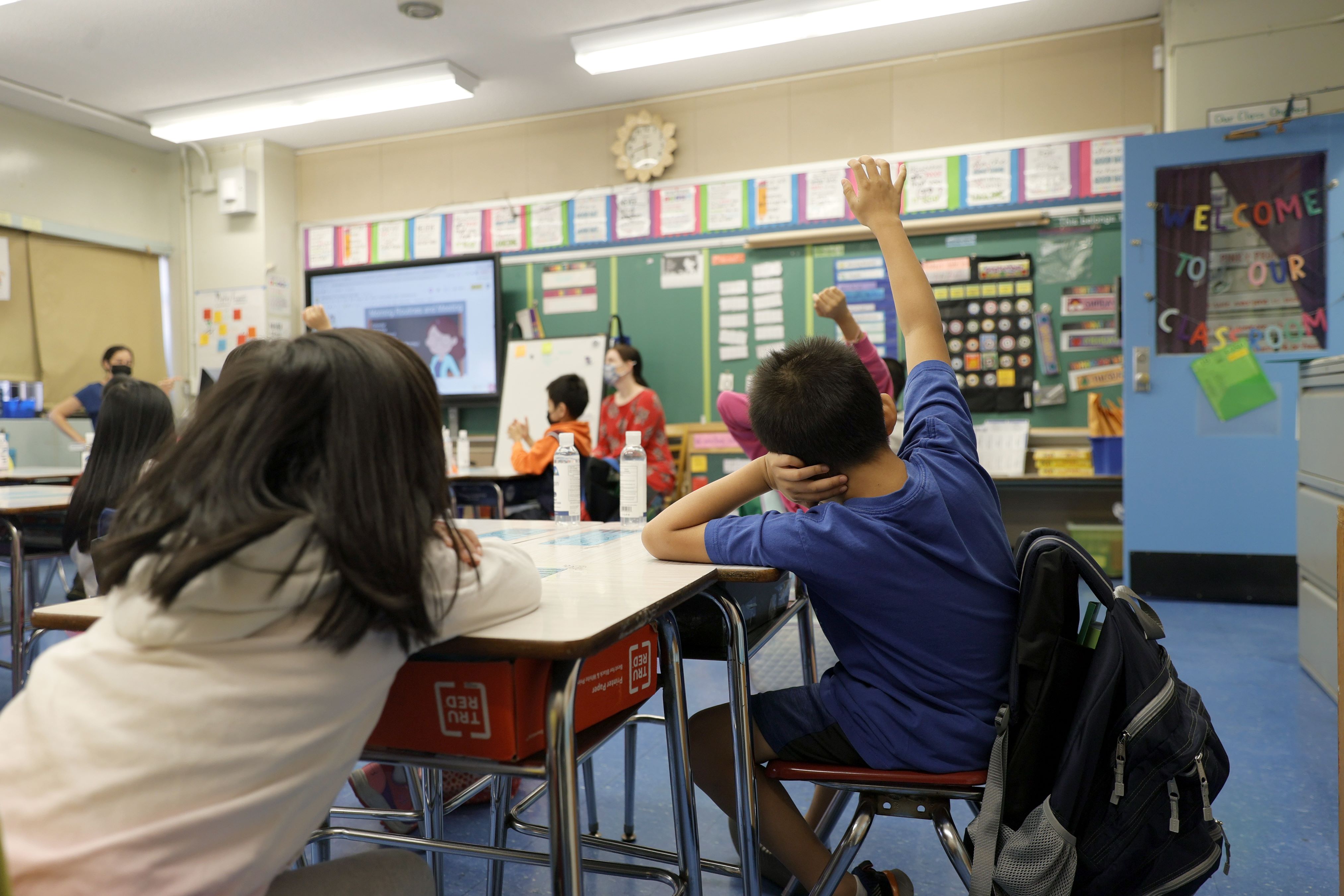Longer Covid-19 school closures seen denting students' future earnings: Study
Sign up now: Get ST's newsletters delivered to your inbox

Some students are returning to classrooms this school year for the first time since the beginning of the coronavirus outbreak.
PHOTO: GETTY IMAGES NORTH AMERICA
Follow topic:
WASHINGTON (BLOOMBERG) - United States students who experienced the longest school closures during the pandemic will face lower future earnings and are less likely to go to college, a new study showed.
Comparing children from the top quartile of income distribution with those from the bottom quartile, welfare losses are about 0.8 percentage point larger for the poorer children, according to a paper circulated on Monday (Oct 25) by the National Bureau of Economic Research.
That calculation does not account for the fact that school closures were longer in richer counties, which would narrow the gap.
Secondary schools were closed for in-person learning for longer periods than elementary schools, meaning that students who started secondary school during the pandemic will endure the largest losses in their earning potential.
In some cases, students are returning to classrooms this school year for the first time since the beginning of the coronavirus outbreak. The average student may have lost months of instructional time, though the amount varies greatly by age, race and socioeconomic status.
Private schools experienced shorter closures than public schools, so students at private schools - which typically attract individuals from wealthier backgrounds - are likely to have higher long-term earnings and college attainment.
That said, within public schools, poorer areas - especially in the South but also the Midwest - saw shorter school closures on average than more affluent regions on both coasts.
While children from poorer households are still worse off and might have been affected more severely by the Covid-19 crisis, shorter closures to their schools could mean that "their losses in human capital and lifetime earnings are more benign than those children from richer families", the paper found.
Many districts are planning to tap federal Covid-19 stimulus funds to pay for support such as hiring additional staff, tutoring, new technology, mental health support or trying to find students who dropped off rosters.
This year, at least 624 districts have been affected by closures in 2,359 schools, though the pace has slowed since late August, according to data aggregator firm Burbio, which tracks school closures. The highest share of disruption has been in Kentucky, Tennessee and Georgia.

